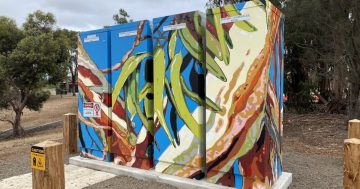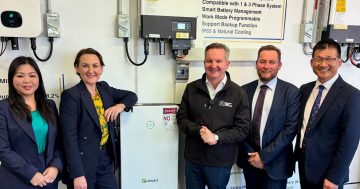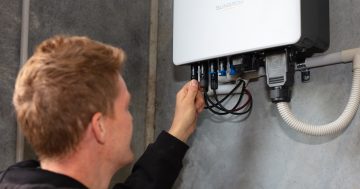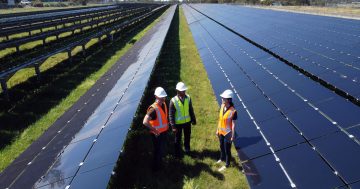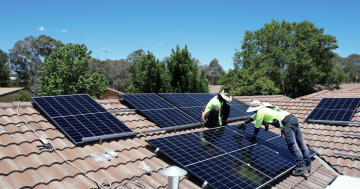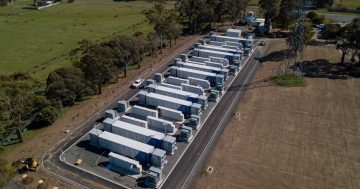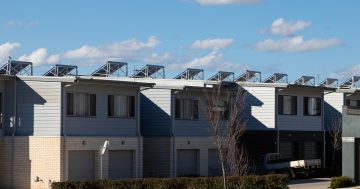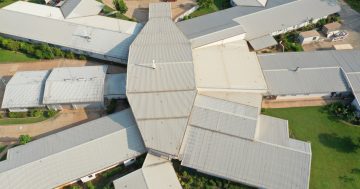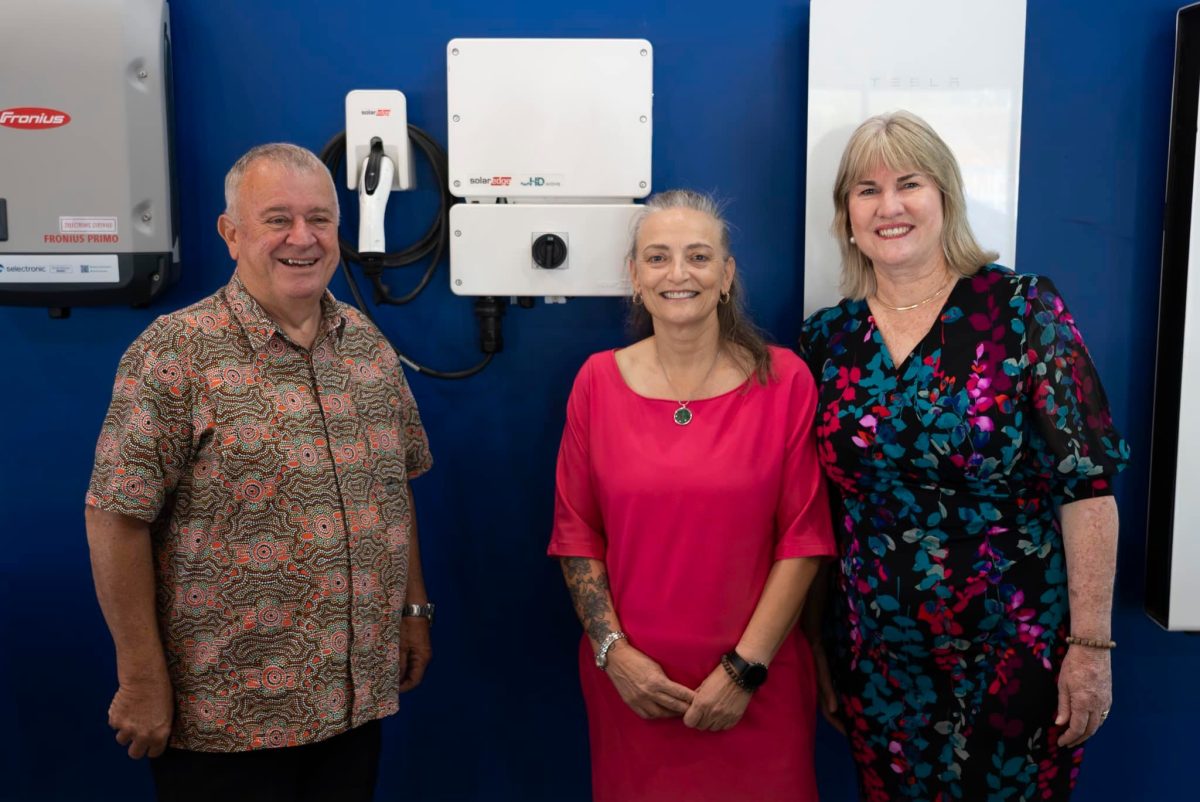
Member for Sanderson Kate Worden (centre) said the government’s scheme would help the NT have more than five times the average uptake of solar battery storage. Photo: Facebook/Kate Worden MLA.
More than 2000 homes and businesses now have a rooftop solar system with battery storage thanks to the Northern Territory (NT) Government’s Home and Business and Battery Scheme (HBBS), to which it has dedicated $3 million for 2023-24.
The Territory has the highest uptake of solar battery storage in the country, a position it has held for the past three years with more than 30 per cent of rooftop solar systems including a battery.
The scheme is credited for the ranking, providing more than $12 million in funding for the purchase and installation of solar batteries, and contributing $45 million of works to the local economy.
Eligible homeowners and businesses are given up to $5000 under the scheme, to purchase and install a solar and battery system. In 2022-23, 970 applications were submitted to the scheme, which reduces electricity bills and improves the reliability of the energy grid by lowering demand on it.
NT Minister for Renewables and Energy Kate Worden said the Labor Government was focused on delivering programs that provided affordable, clean and reliable power.
“The Northern Territory climate is conducive to producing reliable solar energy, and this scheme helps for this natural asset to reduce our reliance on fossil fuels and eases cost of living pressures,” said Ms Worden.
“This scheme is one way we are building towards meeting our target of 50 per cent renewable energy by 2030.”
According to solar energy consultants, SunWiz, the uptake of solar battery systems is growing across the country with government incentives being implemented in the ACT, NSW, and Victoria.
In 2022 there was a 55 per cent increase on the year prior, with more than 47,000 residential batteries being installed.
While South Australia has the greatest number of battery systems per head of population, it was the only state not to have recorded an increase in battery installations in 2022.
In spite of the effort to relieve those struggling with the cost-of-living crisis, SunWiz said it took more than 11 years for households to recover the costs of installing solar panels and batteries. However, for businesses that had installed both systems, shorter payback periods had dropped from seven years in 2021 to 5.7 in late 2022.


